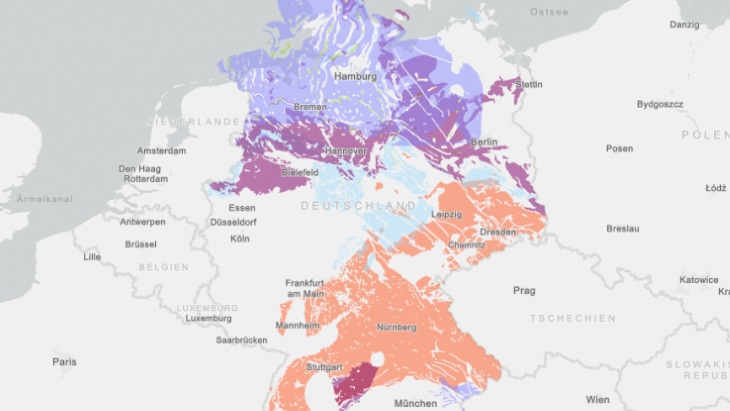The site would store about 1900 containers of waste, which account for 5% of Germany's total nuclear waste but 99% of its radioactivity. A final decision is scheduled for 2031 with the aim to start using the selected site in 2050.
BGE Chairman Stefan Studt said in a statement to accompany release of the list yesterday: "The chance of finding a location in Germany for a repository for high-level radioactive waste that offers security for a million years is very good. This is shown by the 90 sub-areas across the country."
BGE says the sub-areas are spread across all of the country's federal states, with the exception of Saarland. In claystone, BGE has identified nine sub-areas with an area of almost 130,000 square kilometres. In rock salt, a total of 74 sub-areas with an area of just over 30,000 square kilometres have been identified. Of these, 60 sub-areas are located in steep rock salt formations (salt domes) and 14 sub-areas in stratiform (flat rock salt formations). Seven sub-areas with an area of almost 81,000 square kilometrers are located in crystalline host rock.
Steffen Kanitz, who is responsible for the site selection by BGE management, said: "The size of the sub-areas makes it easy to see that we are still a long way from making a preliminary decision on a location. We are now looking forward to discussion with citizens and the specialist public about our results, our methods of applying the criteria of the Site Selection Act and working on new tasks with our committed team of scientists."
The report has excluded a site at a former salt mine in Gorleben that was previously thought suitable, in part because of a potential risk of erosion, BGE said.







_53514_33880.jpg)






